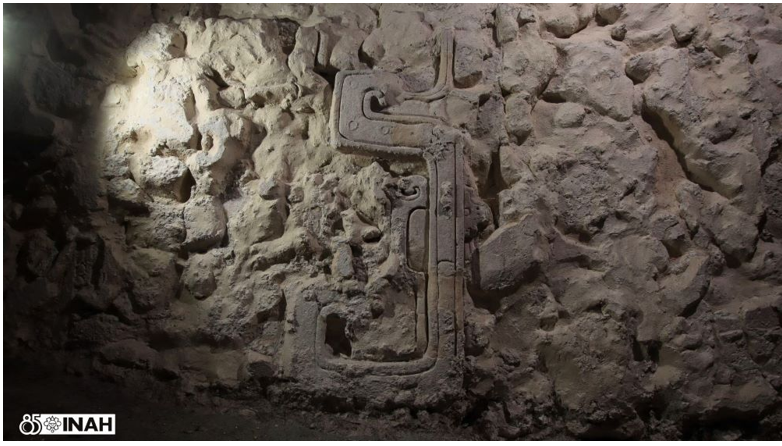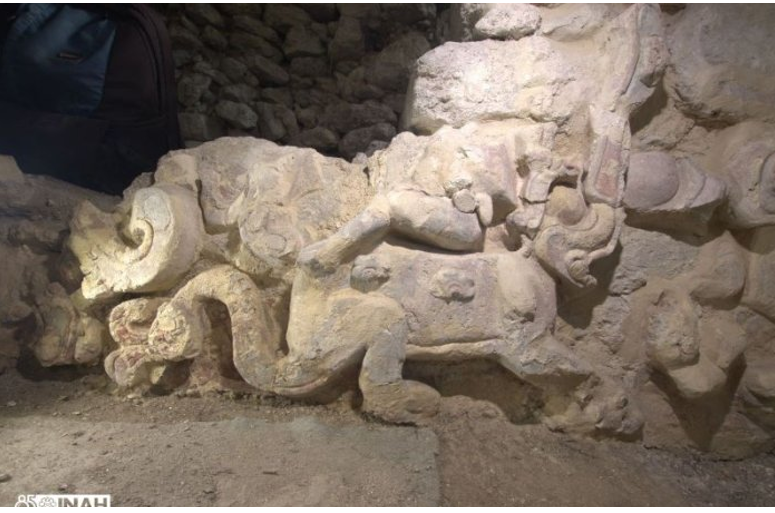National Institute of Anthropology and History (INAH) find stone reliefs depicting cultural information about the Kaanu’l dynasty in Mexico.
19 de Noviembre de 2024 a las 17:19
Photo courtesy of Gibrán Huerta, INAH
By Radu El Fakih Calina
Columnist of Spanglish World Networks, La Ronda del Dia & La Portada Canada
TORONTO. - At first glance, many of us may be inclined to dismiss the world of Mayan archaeology as washed out or lacking in recent discoveries but that couldn’t be further from the truth. In the past few decades, the archaeological community in Mexico has played a huge role in helping to further illuminate their past by finding a multitude of different artefacts and sites. Recently, in the lush green forest of the Yucatan Peninsula, their dedication to the past was proven once again as archaeologists working for INAH and the Federal Ministry of Culture discovered two new artefacts which could help us revolutionize our understanding of Mayan culture in the area.
In the Dzibanché Archaeological Zone in Quintana Roo, archaeologists unearthed two stone platforms with stucco reliefs which are believed to belong to the Kaanu’l dynasty who ruled the lands of Mexico, Belize and Guatemala from around 250 to 650 AD. According to a statement given by INAH, the reliefs could play a huge role in furthering our understanding of Mayan culture in the area and period being looked at by highlighting the different beliefs and views held by said dynasty during what we now call the Early to Late Classic period in Mayan history.
What did the reliefs actually represent?
The reliefs themselves consisted of 3 different scenes located on platforms which were unearthed west of a Ball Court where the Mayans would have played Pitz which was an ancient sport/game popularized by the Mayans. This proximity to the Ball Court is fascinating as the game itself played a ceremonial role in the day-to-day lives of the inhabitants of this vast empire. Thus any depictions on the reliefs could potentially be associated with the game and its meanings.

Photo courtesy of Gibrán Huerta, INAH
The first stucco relief depicts two guardians flanking a pedestal that would have typically held a statuette or sculpture of some kind and there are glyphs surrounding the two guardians which state the name of a potential ruler of the Kaanu’l dynasty. The use of the glyphs and the guardians could thus imply that the relief was used by the ruling dynast to help immortalize themselves as part of history or maybe even invoke protection by trying to associate themselves with idealised mythical guardians.
The second relief, on the other hand, depicted potential ancestors and snakes inhabiting the night sky which were two characteristics that are often depicted in both Mayan and Teotihuacan iconography due to the strong prevalent belief in ancestor worship and the snake being representative of gods such Quetzalcoatl.
This concept of myth and invoking the spiritual is then continued in the third and final relief which contains a multitude of different mythological creatures with the intertwined serpent playing a major role similar to the previous two reliefs. This recurring pattern of serpents could potentially be alluding to the ruling family trying to legitimize their reign by invoking the creator deity Quetzalcoatl, thus suggesting that their reign is ordained by the gods. This in itself may not be interesting at first glance, but this type of behaviour has been seen in many different cultures such as in Roman, Greek, and Egyptian culture where the rulers affirm that they have a divine right to rule either due to descending from the divine or being otherwise blessed by the divine.
To conclude the archaeologists working on the Dzibanché Archaeological Zone in Quintana Roo have been playing a significant role in helping us discover more about Mayan culture and through this recent discovery have found potential evidence that the concept of legitimizing the rule of rulers was not only limited to the east but that said behaviour is potentially universal and not limited by distance, culture, or time period. One thing is for certain though, our understanding of Mayan culture is still quite limited but on the bright side that means that new and exciting discoveries are being made every day and I hope to take you on a journey every week discussing these new discoveries as well as learning more about the past together.











Comentarios
escribenos